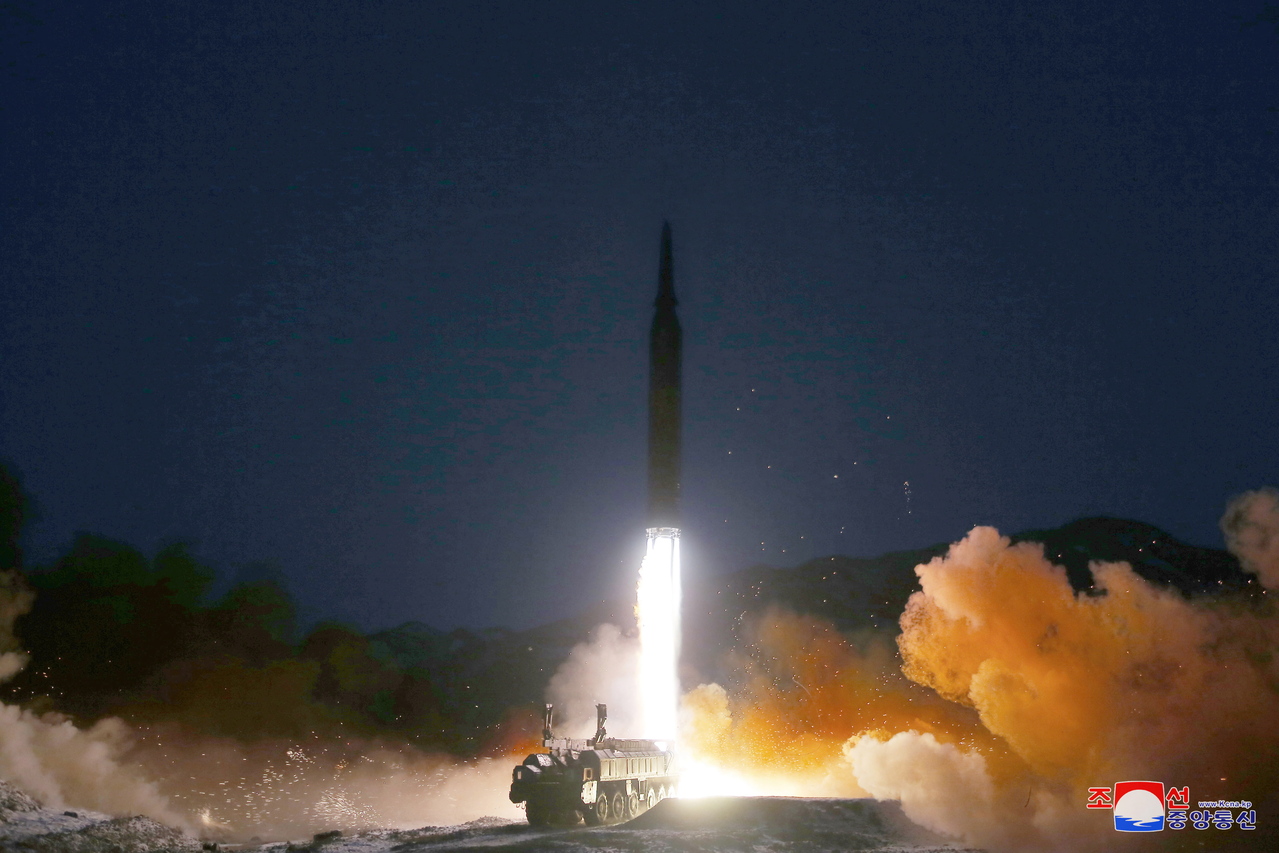More tests to follow latest hypersonic missile launch by North Korea, experts say
Sign up now: Get ST's newsletters delivered to your inbox

A projectile launch was detected on Tuesday (Jan 11) over North Korea's eastern coast.
PHOTO: EPA-EFE
Follow topic:
SEOUL - The successful final testing of a new hypersonic missile by North Korea is a sign that the Kim Jong Un regime will continue work on boosting its nuclear capability as talks with the United States remain stalled, experts say.
A projectile launch was detected on Tuesday (Jan 11) over North Korea's eastern coast, and the South Korean military said it flew for more than 700km at a maximum speed that was 10 times the speed of sound, or 12,348km per hour.
The test was condemned by the United States and five other countries, including Britain and Japan. They issued a statement calling on Pyongyang to "choose dialogue and peace over its unlawful and threatening weapons programme".
The US imposed sanctions on Wednesday (Jan 12) on five North Koreans linked to the country’s ballistic missile programme.
The Treasury Department said the five individuals being sanctioned were “responsible for procuring goods for (North Korea’s) weapons of mass destruction and ballistic missile-related programmes”.
“Today’s actions, part of the United States’ ongoing efforts to counter (North Korea’s) weapons of mass destruction and ballistic missile programmes, target its continued use of overseas representatives to illegally procure goods for weapons”, Under Secretary of the Treasury for Terrorism and Financial Intelligence Brian Nelson said in a statement.
“(North Korea’s) latest missile launches are further evidence that it continues to advance prohibited programmes despite the international community’s calls for diplomacy and denuclearisation,” Nelson said.
North Korean state media Korean Central News Agency (KCNA) reported on Wednesday (Jan 12) that the "final test-fire" verified the "superior manoeuvrability of the hypersonic glide vehicle", its overall technical specifications, and its ability to hit targets in water 1,000km away.
The North Korean leader reportedly ordered officials to "bolster the war deterrent of the country with their continued ultra-modern scientific research achievements".
Mr Kim also stressed the need to "further accelerate efforts to steadily build up the country's strategic military muscle both in quality and quantity", according to KCNA.
Experts said Mr Kim's presence at the test site - the first since March 2020 that he was officially at one - was aimed at bolstering his political prowess as he enters the 11th year of his rule.
Associate professor of international studies Leif-Eric Easley at Ewha Womans University said the new North Korean weapon was "not technologically ready for deployment but state media hyped the latest test, personally supervised by Kim Jong Un, as 'final verification' of a new military capability".
He said: "This looks like classic North Korean box-checking, claiming success of an agenda item from Kim's earlier speech in an attempt to bolster political legitimacy and increase diplomatic pressure."
"Nonetheless, Pyongyang's ability to threaten its neighbours continues to grow, underlining the urgency of US-South Korea-Japan cooperation on missile defence and the need for greater accountability in China and Russia's enforcement of United Nations sanctions," he added.
Mr Kim, who first assumed power in 2011, pledged to further develop the military while vowing to ease domestic hardship in a policy speech carried in state media on Jan 1.
There was little mention of foreign policy and inter-Korean ties, as negotiations between Pyongyang and Washington remained in deadlock after talks broke down in early 2019 over differences in sanctions relief.
Both sides insist that they remain open to dialogue, but the Kim regime has since focused on domestic economic woes and the Covid-19 pandemic.
Mr Chad O'Carroll, chief executive of Korea Risk Group, which monitors North Korea, noted that state newspaper Rodong Sinmun had carried photos of Mr Kim attending the hypersonic missile launch on its cover.

North Korean leader Kim Jong Un observing what state media said was a hypersonic missile launch, on Jan 11, 2022.
PHOTO: REUTERS
"It means Kim is not concerned about being personally associated (with) tests of major new tech," he wrote on Twitter.
"And (he) doesn't care how the US sees this."
Dr Victor Cha of the Centre for Strategic and International Studies think-tank said it was "crystal clear" that North Korea was testing hypersonic missiles with a "goal to complicate US missile defence".
Tuesday's launch marked the regime's third since September last year. It came six days after another on Jan 5, which South Korea evaluated as a general ballistic missile, not hypersonic.
Dr Cheong Seong-chang, director of the Centre for North Korean Studies at the Sejong Institute think-tank, said the third test may have come earlier than planned because the North Korean leadership was "enraged" by South Korea's Jan 5 evaluation.
He also said that the North Korean military needed to show tangible results ahead of major events this year, such as the 110th anniversary of the birth of North Korean founder Kim Il Sung in April.
"North Korea is accelerating the development of its missile capability to shake off growing fatigue among its residents due to the prolonged Covid-19 pandemic and to motivate residents towards realising its five-year plan," Dr Cheong added. "It is expected that it will continue to test missiles."

